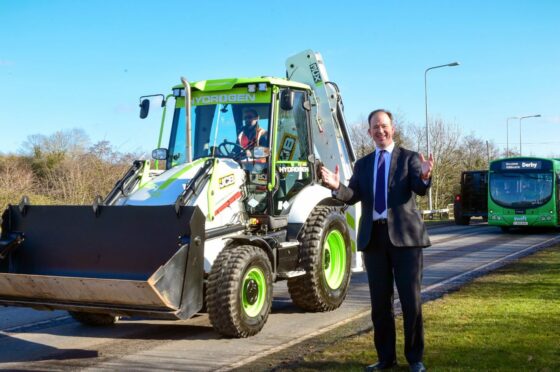The world’s first digger powered by a hydrogen combustion engine has finally taken to UK roads and building sites following recent government approval, helping to decarbonise the UK’s construction industry.
British construction equipment manufacturer JCB, has been given special dispensation under a vehicle special order to test and use its hydrogen powered backhoe loader on roads.
This backhoe loader is the first of its kind and offers a pioneering solution to help reduce emissions on construction sites.
With 25% of the UK’s total greenhouse gas emissions coming from the built environment, it’s vital the entire construction industry looks to decarbonise at every stage.
As well as reducing emissions, the new machine has already created 150 new jobs across the border, with the promise of hundreds more as the company’s hydrogen project advances.
These developments also help to equip the country with the skills and expertise to not only reduce emissions but provide learning to would-be apprentices, future-proofing the nation’s skillset.
JCB hydrogen project attracts 150 new jobs, with more expected
Jesse Norman, technology and decarbonisation minister, said the JCB’s investment in greener equipment is a great example of how the construction industry can use alternative fuels to generate sustainable economic growth.
“JCB’s prototype hydrogen-powered backhoe loader is an important first step in the industry’s efforts to decarbonise in what is a ‘hard to decarbonise’ sector,” said Mr Norman.
“Hydrogen combustion machines can play a vital role in reducing carbon emissions in settings where other types of clean power may not be the most practical or efficient.
Lord Bamford, JCB chairman, said: “This world-first digger has a purpose-engineered internal combustion engine that uses hydrogen gas as the energy source. It’s a real breakthrough – a zero CO2 fuel providing the power to drive the pistons in an internal combustion engine, a technology that’s been around for over 100 years, a technology that we are all familiar with.
“It’s clear to me that, following this visit, he’ll appreciate the potential for hydrogen internal combustion engines to help deliver net zero targets more quickly, while adding jobs and contributing wider economic benefits to the construction sector.”










